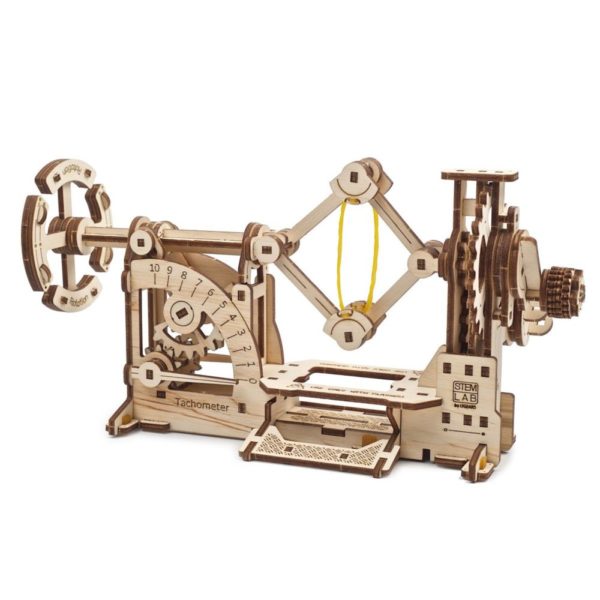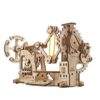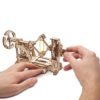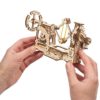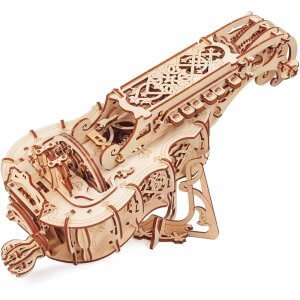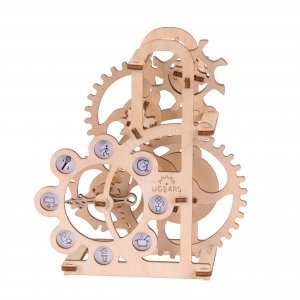How Ugears STEM lab Tachometer Works
You rotate the handle, which transmits the movement through a reducer, in its turn increasing the RPM and displacing twin weights in the centrifugal unit. The higher the RPM, the more centrifugal force separates the weights and shifts the flywheel and a movable axle. The dial (a pointer mechanism) is attached to the axle. The further the axle shifts (higher RPM), the further the dial arrow points, indicating higher speed rotation.
The contents of the Tachometer kit include the following:
- Weights
- Dial
- Handle
- Flywheel
- Axle
- Reducer
If a Tachometer is connected with a Variator, a completely new device would be created. When one turns the handle of the Variator, this motion is transmitted through the reducer to the cone-shaped driving pulley. The first cone rotation is then transmitted via the belt to another cone, which is the driven pulley. When the pedal which is attached to the housing is pushed, it shifts the fork holding the belt, thus changing the driven pulley rotational speed. When the Variator is attached to the Tachometer, the altering rotational Variator speed of the driven pulley is transmitted to the reducer of the Tachometer. Consequently, the centrifugal force on the weights will be increased or decreased, and the flywheel axle will be changed, in its turn deflecting the indicator on the dial to a lower or higher value. So changes to the transmission ratio in the Variator will decrease or increase the RPM of the Tachometer, attached to it.
The following elements are added in the Tachometer-Variator mechanism:
- Cone-shaped driving pulley
- Cone-shaped driven pulley
- Belt
- Pedal
- Housing
- Fork
Ugears STEM lab Tachometer Video
STEM lab Tachometer DETAILS AND SPECIFICATIONS
Dimensions: 8.1 × 7.4 × 2.5 in
9.4 x 4.1 x 4.8 in
1-3 hours
Easy
133
Made of high quality plywood; assembly requires no glue or cutting
14+
